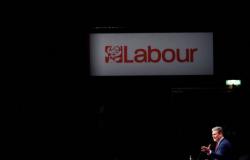Everyone has heard about frivolous millennials, who spend their money on avocado toast, live with their parents and “kill” industries with their habits. There’s nothing new about the concept, but many of this generation say the stereotype is false, and with good reason: generations are much more nuanced than meets the eye, especially considering the large number of millennials.
They turn 28 to 43 years old this year, according to the Pew Research Center (the definitive source on generations that has, however, retired the concept of generational framing). Millennials are defined by economic events stretching from the dot-com bubble to the Great Recession and the advent of social media. But how old they were when these events actually occurred depends on the period in which these people were born, which has been defined as between 1981 and 1996.
While there is debate regarding the very existence of microgenerations (or even the generation itself as a whole, for that matter), it cannot be denied that there are subgroups of millennials who have very different experiences in business and its culture. It’s important to understand all four because, love them or hate them, they have become an economic force.
Masterclass
The Most Promising Stocks on the Stock Exchange
Download a list of 10 Small Caps stocks that, in experts’ opinion, have appreciation potential in the coming months and years, and watch a free class
1981 to 1984: ‘geriatric millennial’
You may know the so-called ‘OG’ millennials (that is, the “original gangsta”, slang that can be translated as someone incredibly exceptional, authentic and old school), who turn 40 to 43 years old this year, as the most old or “geriatric”. The term divided the internet in 2021 when leadership expert Erica Dhawan published an article on Medium about microgeneration.
This group, which is from the early 80s on the cusp of Generation X, was the first to grow up with PCs in the home, but they are also comfortable with TikTok, Dhawan wrote. Because they straddle the line between digital natives and digital adapters, she believes they can bridge the gap between older and younger employees in the workplace, teaching both traditional corporate language and digital skills.
Jason Dorsey, generational researcher and president of the Center for Generational Kinetics, told Fortune that this group entered a very robust job market, even for those who do not have a higher education degree and were able to benefit from more years in the workplace. It was the early 2000s, before the financial crisis, but just after the dot-com bubble burst at the beginning of the millennium, when a moderate recession occurred. But unemployment was already falling when most of this group began graduating from college.
Continues after advertising
In this way, the microgeneration known as the “geriatric millennial generation” is a little more similar to Generation analyzed Dorsey. Although they still faced the challenge of high student debt, this stronger foundation put them in a better financial position to pay off their loans. According to him, it was at that point that the millennials’ “tale of two cities” emerged.
1985 to 1989: millennials of the Great Recession
Today’s thirtysomething millennials, who are college educated despite the 2007 financial crisis and its lasting consequences, have become, indisputably, the economic face of the generation. And she has come a long way to build a career and wealth. The unemployment rate peaked at 10% in 2009, leaving many millennials wandering the job market, ending up in jobs they didn’t want to have or with a gap on their resume while they waited to find the right job, or any job for that matter. According to Dorsey, this may have set back these millennials’ job prospects by two to five years.
“You didn’t have the benefit of entering the job market that you planned, and now you’re competing with all these people who have more experience and, often, better networks. This is very disruptive,” she says. “And that’s a pretty steep slope to climb. After all, every year after you graduate, you have a whole new group of people coming in, and the recruiters are talking to them, not you, because you’ve been unemployed for two years.”
Continues after advertising
A study published by the Stanford Institute for Economic Policy Research reveals that for at least 10 to 15 years, those who graduate during a recession typically earn less than typical graduates and they can become stuck on a downward economic trajectory. The fact that the cost of living is rising and they are buried in student debt and don’t have the work experience to help pay off that debt hasn’t made it any easier for recessionary millennials, Dorsey emphasizes.
“This is the same group who were told that if you graduated from college and got good grades everything would work out, and then they arrived right at the Great Recession,” he adds. “They won the unlucky lottery.”
1990 to 1993: ’30-something’ millennial
Those turning 33 and 34 this year make up the largest age group in the United States. There were 4.74 million and 4.75 million of them in 2021, respectively, according to US Census Bureau data. Turns out these are the millennials born in 1990 and 1991 that Jenna Smialek of The New York Timesconsiders the “peak” millennial generation (for the purposes of this article, we are expanding the name to encompass the entire millennial generation who are now in their early thirties, as they share similar characteristics).
They entered adulthood after the Great Recession, when the economy improved greatly, Dorsey notes. But, she adds, many didn’t feel that way because they were dealing with the snowball effect of student debt and rising costs of living, especially when it comes to housing.
The fact that there were so many of them didn’t help either. As Smialek points out, the enormous number of babies born in 1990 and 1991 meant that there was more economic power, but more competition to get into college, get a job and buy houses, as was possible to observe during the heating of the real estate market during the pandemic. It makes sense, then, that they continue to follow the broader trend of millennials delaying homeownership, as well as getting married and having children, which could impact the future workforce.
“You end up with the trend, but then you also have the change in peer pressure,” says Dorsey, explaining that if your friends aren’t also married, haven’t had kids, or haven’t bought a house, then you might not feel some of the social pressure that previous generations felt it when they were the same age. While older millennials have been trendsetters when it comes to postponing these important milestones, being in the middle or mid-to-late of the generation gives “peak” millennials a different holding power under which to decide whether this change must be the norm. “You don’t have to pioneer these generational traits, but you are deciding which ones you want to carry forward.”
Continues after advertising
1994 to 1996: the ‘zillennials’
Younger millennials have a lot in common with older millennials in that both groups span two generations, something often known as the “cusp.” The mid-1990s group was nicknamed the “Zillennials” because they fall between the pioneering digital world of millennials and the native digital world of Gen Z. But Dorsey says they identify neither with millennials nor with Gen Z. , as many of them do not even remember the events of 9/11.
This gives the group a challenging identity, he adds: “they feel like there is a kind of bridge, or that they are trapped between these two worlds.” But, as with their older peers, this creates an opportunity for young millennials to develop unique characteristics that impact the workplace. As Dorsey explains, they often end up in management and leadership roles “because they are used to acting as a bridge between people.”
Of course, microgenerations are more nuanced than this generic term can represent. And they are not specific to millennials, especially as is the case with older generations, such as “baby boomers”. But the specific characteristics of each microgeneration often tend to persist as people age, Dorsey says.
“The events or experiences that created microgenerations were so formative and impactful that they maintain these differences for a long time,” he explains. “You might lose some of the rough edges over time, but that’s still something these generations carry with them.”
Tags: discover types millennials
--





